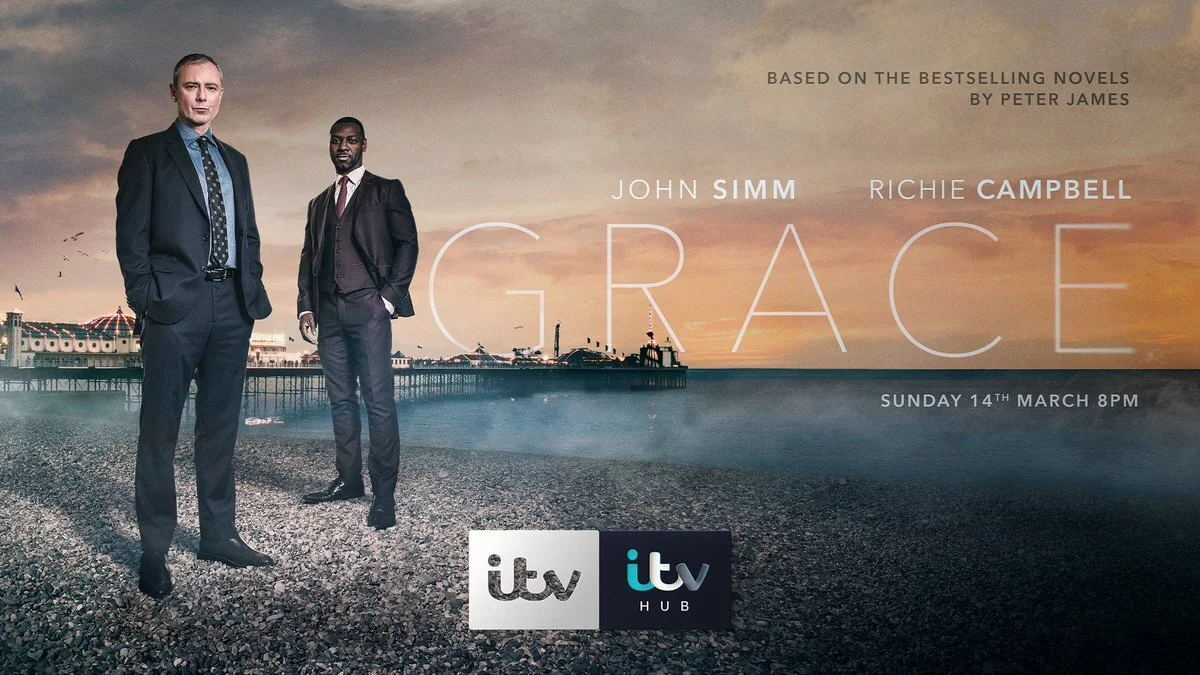New drama “Grace” lensed by cinematographer Dale Elena McCready NZCS
The new detective drama “Grace” premiers on ITV on Sunday, March 14 at 8pm. Based on Peter James’ international bestseller “Dead Simple” and starring John Simm and Richie Campbell, the drama follows Detective Superintendent Roy Grace. With his career at rock bottom and haunted by the disappearance of his wife, Grace is asked by his colleague Detective Sergeant Glenn Branson to help with a case and unravel events that led to the mysterious disappearance of a groom three days before his wedding.
This production is a collaboration between cinematographer Dale Elena McCready NZCS and director John Alexander who previously worked on the historical drama “Belgravia”.
“When putting together a look for “Grace”, director John Alexander and I discussed colours and style of the film by using reference photographs of framing and colours. During these discussions, I gained an insight to how John imagined the finished film will feel. This directed my attention to the equipment choice for the film in important ways”, says Dale Elena McCready.
At Pixipixel’s camera department in Hoxton, McCready tested three large-format cameras – the Sony Venice, Arri Alexa Mini LF and Red Monstro.
“We had previously filmed the 6 episodes of Belgravia for ITV using the larger sensor on the Sony Venice camera and really liked the wider field of view this created. We felt that would suit the main character of Grace well as he is a dislocated from those around him”, says DOP McCready.
For “Grace” along with the large-format cameras, McCready also tested 7-8 sets of lenses, including Canon K35s, Arri Signature Primes, Canon Sumire, and Arri Alura Zooms.
“I did put all the lens sets up on charts to look at how they performed in terms of sharpness at different apertures, but mostly to give me a broad sense of how they resolved details. I then lit a consistent indoor test, with high contrast lighting in the style that John and I had felt would suit the show with an LED lamp flaring one portion of the frame and a small tungsten lamp on the other. I had Owen from Pixipixel stand in for me and move between two positions to go between a cooler sidelight and a warmer one to see how the cameras handled these mixed colours. I also shot an outdoor walking test in the street outside.”
The director looked at the slightly graded test footage: “I often find, though I have a good sense of what combination of camera and lenses will work, it’s often very interesting to offer the footage as a blind test and let the directors choose what jumps out to them. This can sometimes not be what I thought but helps me understanding the director’s vision for the film”, explains McCready.
After further tests, DOP McCready chose the Canon Sumire lens set to achieve the funky look she wanted without sacrificing the sharpness otherwise. The lenses offered a sharp look from T2 and down, but wide open at T1.4 fell apart in a pleasing way.
For the camera, McCready settled on the Red Monstro for its small and light size and giant 8K VistaVision sensor.
“I liked the Red Monstro because it was possible to tune the amount of compression on the RAW files. I was able to shoot at 12:1 compression, allowing me to create files that were smaller than the RAW files from both the Sony and the Arri while still utilising the maximum sensor size. The RED cameras are small enough to have few fixing points, but with 1st AC Ruth Woodside we managed to fashion a really nice hot-swap system to move from handheld, studio, and gimbal using Ignite Digi parts. I also selected the Kippertie Revolva cartridge-based ND system to save putting filters in front of the lens and a Kippertie Carbon2 OLPF filter in camera to add diffusion, again saving front filtration. So, we had the option of not running a matte-box at all if we wanted as it was there purely for light control and to add some protection for the lenses. “
“Grace” is now available on ITV, and follow Dale Elena McCready’s blog for some great camera test videos, reels, and aerial cinematography footage.
Watch the behind-the-scenes video produced by ITV:


